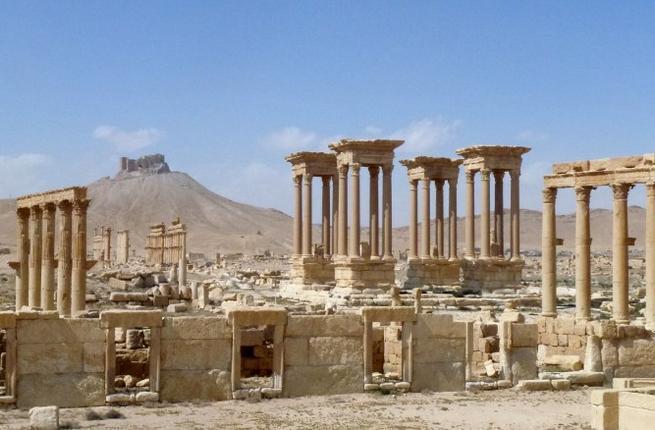“Some people think you can make it in 3D, but it’s not that simple,” Mechthild Roessler, Director of the Division for Heritage and the UNESCO World Heritage Centre, told dpa.
“Reconstruction is not allowed within the framework of the World Heritage Convention,” she stressed.
However, she conceded that there should be a debate about Palmyra and a decision made on a case-by-case basis how destroyed buildings should be dealt with.
The ongoing 10-day UNESCO World Heritage Committee meeting in Istanbul is due to discuss Palmyra and other endangered World Heritage Sites on Tuesday.
Parts of Palmyra suffered damage in fighting between Syrian regime and opposition forces, but most damage was carried out when the site fell under the control of the iconoclastic Daesh militia.
The Temple of Bel, the Temple of Baalshamin and the Monumental Arch are among the many historic buildings and artifacts to have suffered severe damage.
Roessler was part of an expert delegation that visited the site in April after it was liberated from Daesh to assess the extent of the damage.
She said she was relieved that the damage was not as widespread as expected, with some monuments able to be reconstructed “relatively easily,” including the Monumental Arch, of which whole pieces remained.
Unfortunately the two temples had been pulverized, she said.
A 3D replica of the Monumental Arch – made using a 3D printer – was unveiled in London’s Trafalgar Square in April.
After going on display in New York and Dubai, it is expected to find a permanent home in Palmyra.
UNESCO says “Palmyra contains the monumental ruins of a great city that was one of the most important cultural centres of the ancient world.”
“From the 1st to the 2nd century, the art and architecture of Palmyra, standing at the crossroads of several civilizations, married Graeco-Roman techniques with local traditions and Persian influences.”
It has been on the organization’s List of World Heritage in Danger since 2013.
Source: DPA











